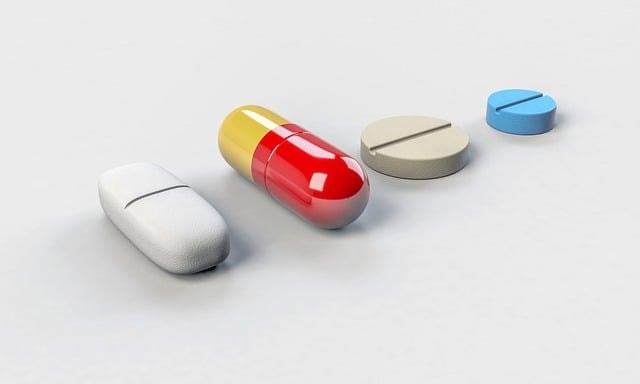When you’re unable to work due to a serious illness or injury, understanding what qualifies for short term disability is crucial. Disability awareness is essential for both employees and employers to fully understand short-term disability options and protections. Typically, severe medical conditions like major surgeries, pregnancy complications, and significant injuries that require time off work are covered. This article will delve into common conditions and criteria that meet the requirements for short-term disability benefits. If you would like a free online tool to evaluate if you have a potential claim related to a disability, here is a link to that free tool.
Key Takeaways
- Short-term disability insurance provides financial support for up to 52 weeks, covering a percentage of your pre-disability income when you’re temporarily unable to work due to illness or injury.
- Short term disability pay typically covers 50% to 70% of your regular wages, depending on your policy, and is available for qualifying medical conditions such as serious illnesses, pregnancy complications, temporary injuries, and certain mental health issues.
- Commonly covered conditions include severe illnesses, pregnancy complications, temporary injuries, and mental health issues, but exclusions exist for pre-existing conditions and work-related injuries.
- To apply for benefits, collect necessary documentation, notify your employer, and manage your claim effectively to ensure timely support during your recovery.
Understanding Short Term Disability Insurance
Short-term disability insurance provides immediate benefits for individuals facing temporary disabilities. It steps in when severe illness or injury prevents you from performing your regular work duties, offering a financial cushion during your recovery. The stress of medical bills and financial stress from lost income can be overwhelming if you are unable to work due to severe illness or injury.
Short-term disability insurance alleviates this burden by covering a percentage of the employee’s income, letting you focus on recovery instead of lost wages.
These disability benefits can also enhance your overall workplace support. Many employers include short-term disability insurance in their employee benefits package, showcasing a commitment to employee well-being and attracting top talent. Receiving benefits from these std benefits demonstrates that your employer values your health and recovery.
Short-term disability coverage doesn’t just protect you; it also fosters a supportive workplace culture that benefits everyone.
Benefit Periods and Waiting Periods
A critical aspect of short-term disability coverage is the benefit amount period, which typically ranges from 9 to 52 weeks, providing financial support for an extended duration. Short-term disability insurance usually pays a weekly benefit, meaning you receive payments each week for the duration of the benefit period. Some policies even extend the maximum benefit period up to 24 months, depending on the severity of your condition and the specifics of the insurance policy. This ensures that you have ample time to recover without the immediate pressure of returning to work.
The waiting period, typically lasting from 1 to 14 days (7 to 14 days in South Carolina), is the time before your disability benefits kick in. Understanding these periods helps you plan better, ensuring a financial buffer during the initial days of your disability.
Coverage Levels and Elimination Periods
Short-term disability insurance typically replaces 40% to 80% of your employee’s income, with most policies offering between 60-70% of your regular salary. Benefit amounts are determined by the insurance policy and may vary based on the specific coverage options you select. This income replacement is crucial for covering living expenses, such as mortgage payments and day-to-day costs, helping you replace lost income and maintain your standard of living even when you can’t work.
The elimination period, often lasting up to 14 days, is the time before benefits begin. Knowing these details helps you plan financially, ensuring you can cover any immediate expenses before the insurance benefits start.
Common Medical Conditions Covered by Short Term Disability

Short-term disability insurance provides a safety net for various medical conditions that prevent you from working, covering non-work-related illnesses or injuries that require substantial time off. Under state law, pregnancy and certain illnesses are considered a temporary disability, which influences eligibility for short-term disability benefits.
Severe illnesses like arthritis, cancer, heart attacks, and strokes, as well as acute diseases such as pneumonia and appendicitis, are covered by short-term disability, ensuring you have financial support during recovery.
Conditions like severe symptoms from COVID-19, pregnancy-related complications, and significant injuries from off-the-job accidents are also covered. This coverage provides peace of mind and stability during challenging times, beyond just replacing lost income to help cover living expenses.
Pregnancy and Childbirth
Pregnancy-related complications can prevent mothers from returning to work promptly. Short-term disability insurance covers these scenarios, extending benefits for conditions that require bed rest or recovery from a C-section.
Short term disability payments are typically issued during the recovery period following childbirth or pregnancy complications.
After childbirth, the typical coverage duration is 6-8 weeks, but this can extend if complications arise, ensuring that new mothers have the necessary financial support during this critical period.
Chronic Illnesses
Chronic illnesses, such as severe asthma and lupus, are long-term disabilities that can significantly impact daily functioning, especially for individuals with a severe disability. These conditions often require substantial time off work for treatment and recovery, making them eligible for short-term disability benefits.
Benefits for chronic illnesses are typically calculated as a percentage of your pre disability earnings.
Short-term disability insurance helps alleviate the financial hardship associated with chronic illnesses by providing financial support during these periods, and short term disabilities, short term disability cover, and long term disability coverage can also play a crucial role in ensuring continued assistance for individuals with term disabilities and social security disability insurance.
Mental Health Conditions
Mental health conditions, including severe anxiety, depression, and stress, can qualify for short-term disability benefits, although claims often require comprehensive medical documentation to ensure approval. Partial disability benefits may also be available if you are able to return to work part-time while still recovering from a mental health condition. Proper medical documentation, including records from healthcare providers, is critical for substantiating these claims and receiving the necessary financial support during your recovery, including social security disability benefits. A qualifying disability can significantly impact your ability to work and access these benefits.
Temporary Injuries and Recovery

Temporary injuries requiring time away from work for recovery, including major accidents and surgeries, are also covered under short-term disability insurance. After filing a claim for a temporary injury, employees may receive benefits that replace a portion of their income during the recovery period. Short-term disability provides financial support, allowing you to focus on healing without the added stress of financial instability.
Accident-Related Injuries
Non-work-related injuries from accidents, such as car crashes, qualify for short-term disability benefits if they necessitate time off for recovery. These injuries, ranging from broken bones to more severe trauma, are covered, ensuring financial support during your recovery period.
Post-Surgery Recovery
Recovery periods following major surgeries, whether planned or emergency, are typically covered under short-term disability insurance, including the necessary time off work to fully recover and ensuring financial support during this phase.
Exclusions and Limitations

Understanding the exclusions and limitations of your short-term disability insurance policy is crucial. For example, a pre existing condition is typically excluded from coverage if it existed before policy enrollment, unless you have been insured for a specified period.
Additionally, each insurance policy may have specific exclusions, such as certain pregnancy-related claims or specific medical conditions, which must be reviewed to fully understand your coverage.
Pre-existing Conditions
Pre-existing conditions are medical conditions that existed before obtaining short-term disability insurance, including temporary medical conditions. Many policies exclude coverage for these conditions unless the employee has a qualifying medical condition and has been insured for a specified period.
It’s essential to understand how your specific policy handles pre-existing conditions to avoid any unexpected denials of coverage.
Work-Related Injuries
Work-related injuries, which occur while performing job duties, are generally covered by workers’ compensation rather than short-term disability insurance. This distinction ensures that short-term disability insurance focuses on non-work-related medical conditions, while workers’ compensation addresses on-the-job injuries.
Policy-Specific Exclusions
Each short-term disability insurance policy may have specific exclusions that limit coverage for certain conditions. Understanding these exclusions is crucial for knowing what medical conditions are not covered and avoiding any surprises when filing a claim.
Reviewing your policy details thoroughly will help you understand these limitations.
Employee Benefits and Job Protection
Navigating a period of short term disability can be challenging, but understanding your rights and available benefits can make the process much smoother. Short term disability insurance not only provides crucial financial support during your recovery, but also offers important job protections and coordinates with other workplace benefits. Knowing how these elements work together ensures you can focus on your health without worrying about your employment status or access to essential benefits.
How Short Term Disability Affects Your Employment Status
When you need to take time off work due to a non work related illness or injury, short term disability insurance steps in to provide financial assistance while you recover. Importantly, your employment status is protected under the Family and Medical Leave Act (FMLA) or similar state laws.
This means that when you file a short term disability claim, you are entitled to job protected leave, allowing you to return to your previous position or a comparable role once you’re able to work again. Employers are required to comply with these regulations, ensuring that your job is secure and that you won’t face negative consequences for taking necessary medical leave. This protection gives you peace of mind, knowing that your career is safeguarded while you focus on your health and recovery.
Coordination with Other Workplace Benefits
Short term disability benefits are just one part of a comprehensive employee benefits package. These benefits often work in tandem with other forms of disability insurance, such as workers compensation and social security disability insurance. For example, if you experience a work-related injury, workers compensation typically provides coverage, while short term disability is designed for non work related illnesses or injuries.
It’s important to understand how your disability benefits interact to avoid any overlap or gaps in coverage. Employers and insurance providers coordinate these benefits to ensure you receive the appropriate support without duplication. Reviewing your employee benefits package can help you understand how short term disability, social security disability, and other employee benefits work together to provide a safety net during times of need.
Legal Protections During Disability Leave
Employees who take short term disability leave are protected by several important laws, including the Americans with Disabilities Act (ADA) and the FMLA. These laws ensure that you cannot be discriminated against because of your disability and require employers to provide reasonable accommodations to support your return to work.
While you are on term disability leave, you are also entitled to continue your group health insurance coverage, provided you remain eligible for benefits. Employers must give you written notice of your rights and responsibilities, helping you understand what to expect during your leave. These legal protections are designed to create a fair and supportive work environment, allowing you to focus on your recovery with confidence that your job and benefits are secure.
How to Apply for Short Term Disability

Applying for short-term disability benefits involves several steps:
- Gather the necessary information and documentation. Only eligible employees who meet certain criteria, such as minimum employment duration and required hours worked, can apply for short-term disability benefits.
- Notify your employer about your intention to apply.
- Keep your employer updated about your condition to ensure you receive the appropriate support and benefits during your leave.
Filing a Claim
Filing a claim for short-term disability benefits involves submitting detailed accounts of your short term disability claim and the expected recovery time to your insurance provider. Many employers and insurance providers now offer digital platforms and online portals to streamline the process, making it easier for employees to monitor their claim status and receive disability benefits in a timely manner.
Medical Documentation
Thorough medical documentation is crucial for the approval of short-term disability claims, including comprehensive medical records and certification from a medical professional. Claims for mental health conditions, such as anxiety and depression, require even more detailed documentation to ensure approval, especially when there is insufficient medical evidence.
Employer Notification
Informing your employer about your disability and the anticipated leave duration is essential for coordinating benefits and job protection. This communication helps both the employee and employer plan for your absence, ensuring you have the necessary support during your recovery period under the medical leave act.
Managing Short Term Disability Claims
Effective management of short-term disability claims involves maintaining open communication with claims adjusters and promptly submitting all required documentation to prevent fraudulent claims. Insurance premiums can impact the length of benefit periods and influence how short-term disability claims are managed, as higher or lower premiums may correspond to different coverage durations. Efficient claims management helps ensure timely delivery of benefits, minimizing financial strain during your recovery.
Tracking Claims
Track the status of your short-term disability claims through employer-provided platforms or insurance company portals. Comprehensive medical records from healthcare providers are essential for successful claim processing, ensuring all necessary information is available for review.
Returning to Work
Returning to work after a short-term disability requires:
- Effective communication with your healthcare provider to obtain necessary documentation and support.
- Notifying your employer about your return.
- Discussing any required accommodations or modified duties to help ensure a smooth transition back to work.
Summary
Understanding short-term disability insurance is crucial for navigating life’s unexpected challenges. From providing financial support during recovery to covering various medical conditions, this insurance offers peace of mind when you need it most. By knowing what qualifies for short-term disability and how to manage claims effectively, you can ensure that you and your loved ones are protected.
Additionally, voluntary benefits such as dental, vision, and life insurance can further enhance your overall employee benefits package.
Frequently Asked Questions
What medical conditions typically qualify for short-term disability insurance?** **?
Short-term disability insurance usually covers serious health issues like cancer, heart attacks, and strokes, as well as chronic conditions like severe asthma and mental health challenges. It also includes pregnancy complications and recovery from major surgeries or injuries.
How long is the benefit period for short-term disability?** **?
Short-term disability benefits usually last between 9 to 52 weeks, but some plans can extend up to 24 months based on your policy and condition. It’s all about the details of your specific coverage!
What is the waiting period before benefits start?** **?
The waiting period for short-term disability benefits usually kicks in anywhere from 1 to 14 days, with South Carolina often seeing a range of 7 to 14 days. So, you might want to check your specific policy for the details!
Are pre-existing conditions covered by short-term disability insurance?** **?
Pre-existing conditions are often excluded from short-term disability insurance unless you’ve been insured for a certain time. Check your policy details to know exactly how they apply.
How do I file a claim for short-term disability benefits?** **?
To file a short-term disability claim, just gather your medical documentation and details about your condition and expected recovery, then submit everything to your insurance provider. Many companies also have online tools to help you track your claim, so check that out too! If you think you may be retaliated against for doing so, here is a link to an article with more information about retaliation.



